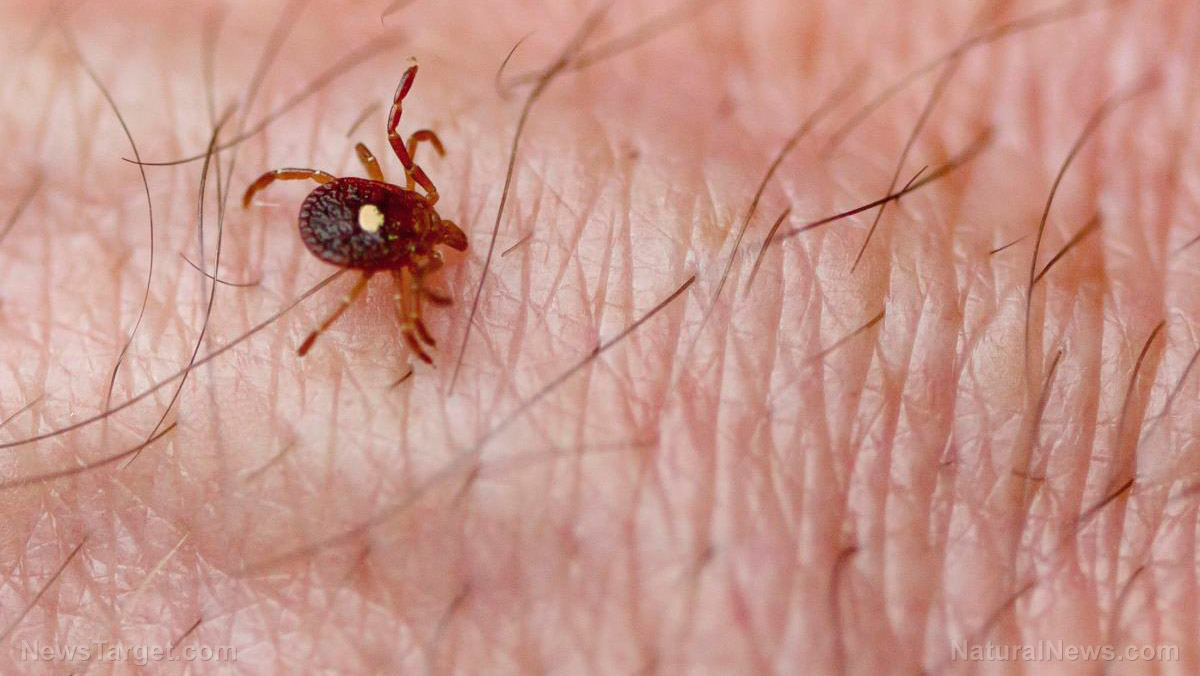New hardy tick infesting New Jersey expected to migrate westward, experts warn the public to be extra careful
06/09/2018 / By Frances Bloomfield

A foreign breed of tick has claimed New Jersey as its own. First discovered on an infected sheep in Hunterdon County last fall, the East Asian or Longhorned tick (Haemaphysalis longicornis) has since been found in other areas of New Jersey, namely Union County. However, experts warn that it may only be a matter of time before the East Asian tick makes its way westward.
Speaking to Today.com, James Lok, professor of parasitology at the University of Pennsylvania School of Veterinary Medicine, stated that the tick has already managed to migrate from its native Asia to Australia and New Zealand, and that crossing the Delaware River and thriving in other states will be no problem for this hardy insect. “I would be surprised if it does not spread out of New Jersey quickly,” added Lok.
The East Asian tick possesses a number of unique survival mechanisms that allow it to live under almost any condition. Firstly, these insects don’t need to mate: The female East Asian tick is fully capable of reproducing on its own (asexual reproduction) – a single, female East Asian tick can lay upwards of a thousand eggs. Secondly, this insect has no preferences when it comes to carriers. Deer, sheep, cow, mice, and humans are all fair game to the East Asian tick at any stage of its life cycle.
Adding to the growing concerns is the fact that the tick can host and transmit all manner of diseases. Apart from Lyme disease, it remains to be seen what other kinds of North American diseases the East Asian tick can spread. In Asia, the insect has been linked to anaplasmosis, Rocky Mountain spotted fever and severe fever with thrombocytopenia syndrome (SFTS).
The power of the elements: Discover Colloidal Silver Mouthwash with quality, natural ingredients like Sangre de Drago sap, black walnut hulls, menthol crystals and more. Zero artificial sweeteners, colors or alcohol. Learn more at the Health Ranger Store and help support this news site.
Of these diseases, SFTS has yet to be seen in North America. This disease is characterized by a low blood platelet count. Its symptoms range from diarrhea to lymph node disease to conjunctival congestion, and some cases have resulted in death.
“It’s got a pretty terrible track record in China, Japan and recently in New Zealand and Australia. And it’s not a stretch to assume it would be able to transmit the related diseases in North America,” said Lok.
Fortunately, the ticks that were found in Hunterdon County tested negative for the three aforementioned diseases. Moreover, standard insecticides appear to be effective at controlling East Asian tick numbers. Still, experts have emphasized the need to remain vigilant and follow all of the necessary preventive measures. (Related: Scientists are closer to developing a cure for Lyme disease as they discover how bacteria fight our immune responses.)
These include tick-proofing one’s yard, a process that involves numerous steps such as:
- Keeping it clean: As per News-Medical.net, ticks usually thrive in areas with an abundance of shade and moisture. Turn your yard into a dry, open space with plenty of sunlight by trimming your lawn and getting rid of brush and leaf litter, maintaining a separate corner for gravel, wood chips, and compost will also help.
- Be careful with your plants: Decorate your yard with plants that won’t attract tick-carrying wildlife such as deer and mice. These kinds of plants tend to attract animals by providing a reliable source of nutrition or by possessing an irresistible scent. Consult your local nursery for viable options. Alternatively, you could also put up physical barriers to prevent animals from getting to your plants and shrubs.
- Check your pets: Make it a point to always check your pets for ticks after every outdoor trip. Ticks will typically attach themselves to the tail, head, under the armpits, behind the ears, and between the toes.
Stay up-to-date on tick infestation and tick-borne diseases by going to Health.news.
Sources include:
Tagged Under: Diseases, East Asian tick, infestation, insects, longhorned tick, parasites, prevention, Public Health, tick-borne diseases




















